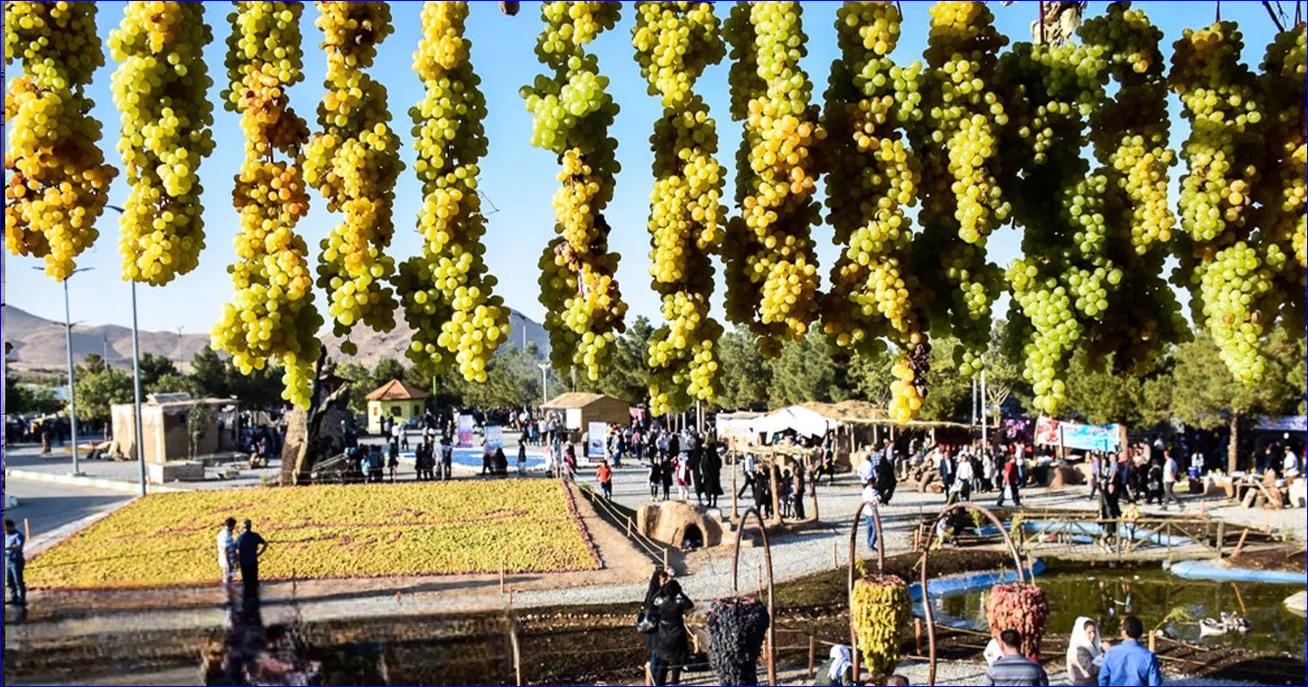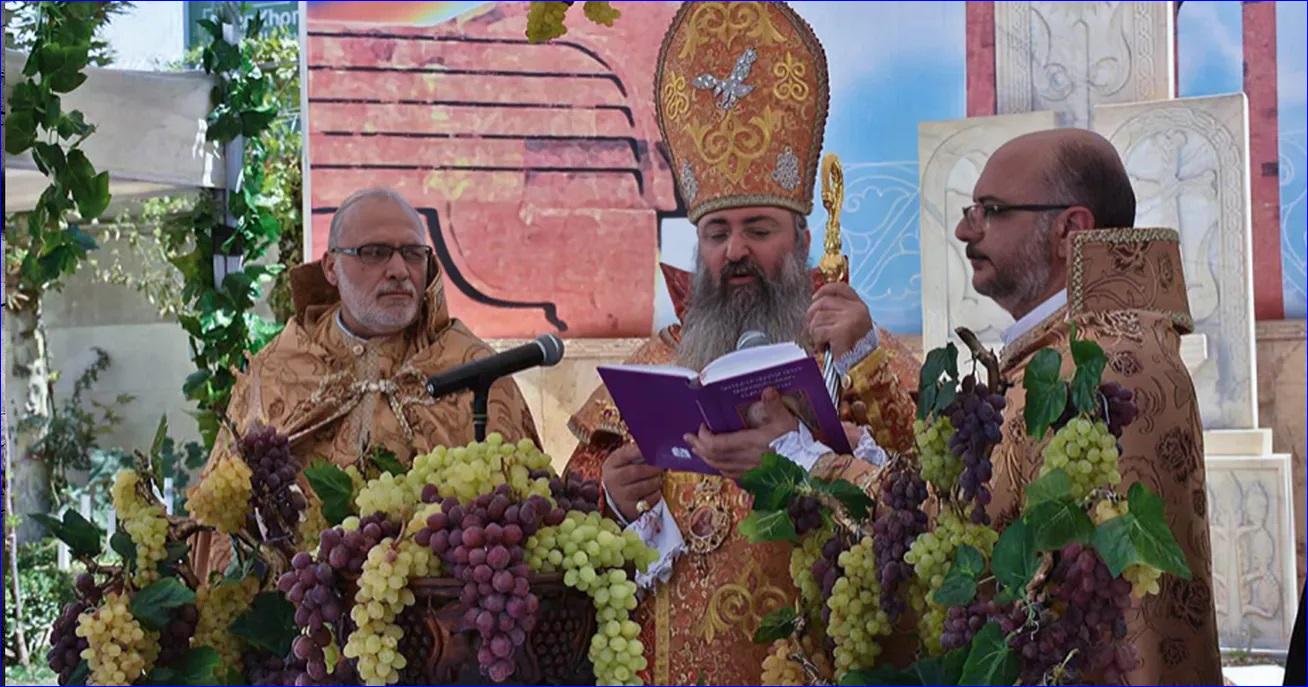


The village pulses with life, filled with the shared spirit and deep-rooted traditions that draw the community back to their sacred celebration.
Holy Mary's Day, also known as Assumption of Mary Day, is an occasion for Christians of various denominations to celebrate the Grape Blessing Day.
One of the most significant Christian celebrations is the commemoration of the Assumption of Holy Mary, which in Iran has long been associated with the ancient Grape Festival.
The origins and significance of the festival are points of debate among many followers of Christ and Mary. While this celebration is a sacred day for Catholics worldwide, its official recognition by the Vatican marked a new era in the Church's approach to the role of women and the acknowledgement of their independent status.
Today, many Orthodox churches, including the Greek Orthodox Church, observe August 15 as a holy day. However, other Orthodox and Protestant denominations view this date with varying degrees of reverence or scepticism.
The celebration's history, intertwined with the ancient Grape Festival, has created a bond among various religious communities in Iran, particularly in West Azerbaijan province. Despite the lack of official recognition by the Iranian government, this bond and the associated ceremonies have persisted.
What is the Grape Festival?
The Grape Blessing Day is a shared tradition among the Iranian, Armenian, Azeri, Kurdish, and Assyrian communities, celebrated in Urmia during August and September. The festival has even influenced music, with the song "Vineyard" by Iranian singer Googoosh said to evoke this ritual.

An Assyrian resident of Tehran, who wished to remain anonymous for safety reasons, explained: "This festival is so significant that Assyrians from all over Iran gather in Urmia to take part."
They said the festival originally commemorates Holy Mary and is recognized on the same day in the West.
"This celebration coincides with the grape harvest, marking the gradual transition to autumn," they added. "It is primarily a religious ceremony where grapes and wheat are blessed, symbolizing God's provision and sustenance for the people."
Historically, Assyrians, whose ancestral lands are in northern Iraq and southeastern Turkey, and who have resided in Urmia since the 13th century, have celebrated the Grape Festival. Urmia, known for its grape production, remains a central location for this event, as grapes were traditionally the Assyrians' primary crop.
Describing his annual pilgrimage to Urmia for the festival, the Assyrian citizen said: "At the Grape Festival, Assyrians present two new baskets of grapes and wheat in the front. The priest blesses the harvest by placing his hands on the baskets and offering prayers. It is customary for Assyrians in Iran to gather in villages at night, celebrating with dance and joy."
Ordushahi, a village in the central part of Urmia in West Azerbaijan province, is where most Assyrians congregate for the Grape Festival.

The Background of the Blessing of Grapes
The celebration of the blessing of grapes is believed to date back centuries before Christianity. During the pre-Christian New Year, known as "Amanor" in the Armenian community, the feast of "Anahit," the chief goddess worshipped by Armenians, was marked by offerings of fruits and plants to the temple of Anahit.
During the harvest season, fruits from the gardens were blessed. In Armenian culture, grapes, pomegranates, and apricots have symbolized generational continuity, stability, and vitality. After Christianity, this ritual evolved into the blessing of grapes and was incorporated into the Armenian Church's traditions.
For Christians who partake in wine, grapes symbolize wisdom, agriculture, sweetness, hospitality, fertility, youth, and eternal life. Numerous legends and stories surround this symbolism.
According to one tradition, when Noah's Ark arrived on Mount Ararat after the floodwaters receded, Noah planted a vine in the fertile soil of the Ararat plain as a sign of blessing and thanksgiving.
In ancient Greek and Roman mythology, a god is associated with vineyards and wine, further illustrating the cultural significance of grapes.
Many Christians believe that Mary, the mother of Jesus Christ, was taken body and soul, both physically and spiritually, into heaven to live with her son forever. This event is celebrated as the Assumption of Mary in some churches.
The day is an official holiday in most Catholic countries, as well as in Greece and Cyprus, which follow the Greek Orthodox Church. The Assumption is one of the five most important Christian celebrations, observed on the Sunday closest to August 15. According to Eastern church traditions, Mary died peacefully in Jerusalem, was placed in a family tomb, and after three days, was assumed into heaven.
According to tradition, devout Christians, especially those who have taken vows, abstain from eating grapes until they are blessed by a priest. This fasting period lasts until the grape harvest. Some people fast for two or three days before the day.
On the day of the celebration, they eat grapes that have been brought to the church by benefactors and blessed three times by the highest spiritual authority during a ceremony with prayers and religious hymns. The priest draws a cross three times over the container of grapes, blessing them in the process.
On that day, prayers recount how God created the plants and fruits on the third day and provided Adam and Eve with a blessed life in paradise. However, after they sinned and were expelled from paradise, humanity was redeemed through the appearance of the "Only Begotten Son of God," freeing them from sin and death.
The bunches of grapes gifted to the church are blessed, with prayers offered for those who taste them, for those who donated the grapes, and for the vineyards and gardens from which the grapes were harvested.
The Link Between Religious Rituals and the Growth of Tolerance
Iran's cultural and religious landscape has historically been deeply interconnected with the diverse tribes and neighboring civilizations, from the Tibetan Plateau in the east to Erzurum, Anatolia, and Mesopotamia in the west. However, the establishment of religious regimes, particularly the Shia Islamic Republic, has gradually eroded these connections through policies of exclusion and othering.
Before the 1979 Islamic Revolution, the Grape Festival was a public celebration that symbolized the bond between various ethnic and religious communities in Iran. However, with the implementation of restrictive government policies, this festival was driven into the private spheres of religious and ethnic minority communities, with public observance largely prohibited.
The survival of this celebration today is a testament to the resilience of minority cultural communities and religious groups, particularly Armenian and Assyrian Christians.
Regardless of the specific beliefs underlying these holidays and rituals, the act of celebrating together fosters a greater understanding of democracy within society. It promotes tolerance and reduces animosity toward communities with differing beliefs - principles that the Islamic Republic actively opposes.

or register to post a comment.